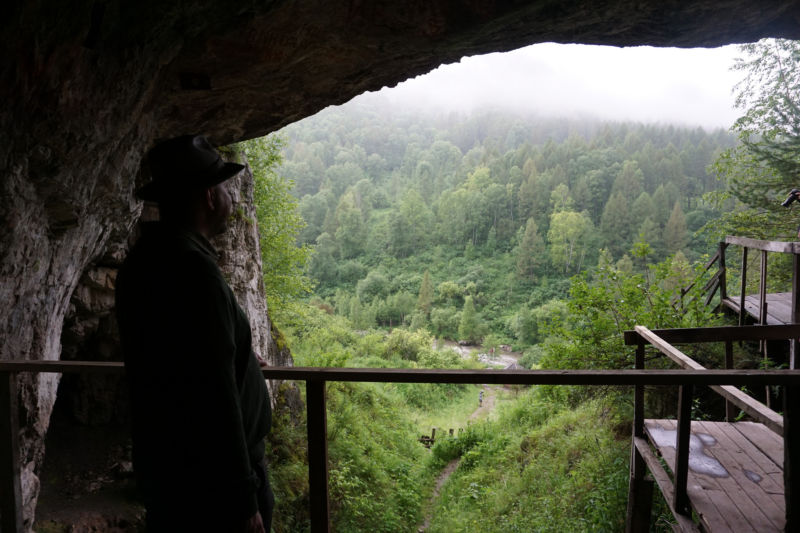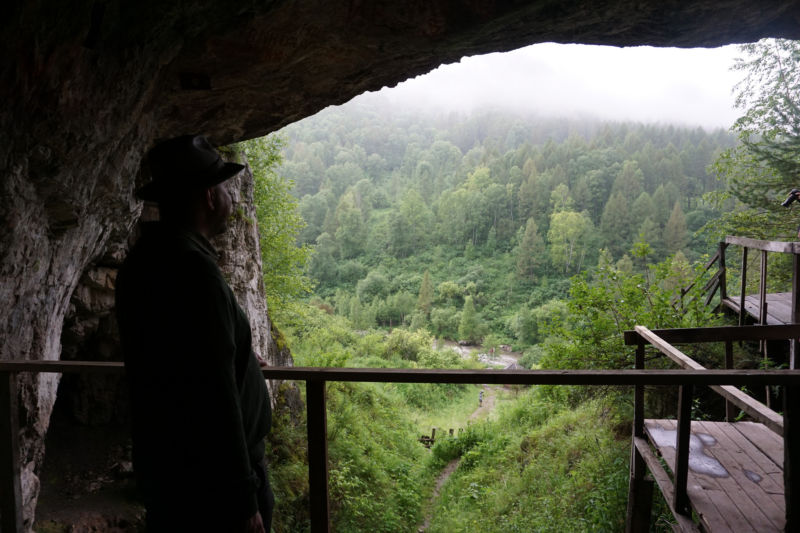
Enlarge / Neanderthals and Denisovans probably enjoyed the view from Denisova cave, too. (credit: flickr user: loronet)
At various points in the last 300,000 years, Denisova Cave has sheltered three different species of hominins. But with fossils from only eight individuals—four Denisovans, three Neanderthals, and the daughter of a Neanderthal/Denisovan pairing—it’s hard to tell a detailed story about when each species lived in the cave. According to a recent genetic study, however, the Denisovans were the first, arriving around 250,000 years ago. And they may still have been there when the first members of our species arrived around 45,000 years ago.
That timeline is the result of a recent study of mitochondrial DNA (genetic material passed directly from mother to child) mixed into the deep layers of sediment covering the cave floor. The fragments of ancient DNA probably came from a mixture of feces, decomposing remains, and shed skin and hair that ended up mixed with the dirt of the cave floor, according to archaeologist Elena Zavala of the Max Planck Institute for Evolutionary Anthropology, lead author of the study.
“We know that DNA can bind to the minerals found in the sediments and we have also seen microfossils when examining the sediments under a microscope,” she told Ars in an email. “Future studies linking specific elements of the sediment to DNA preservation will help increase our understanding of this process.”





